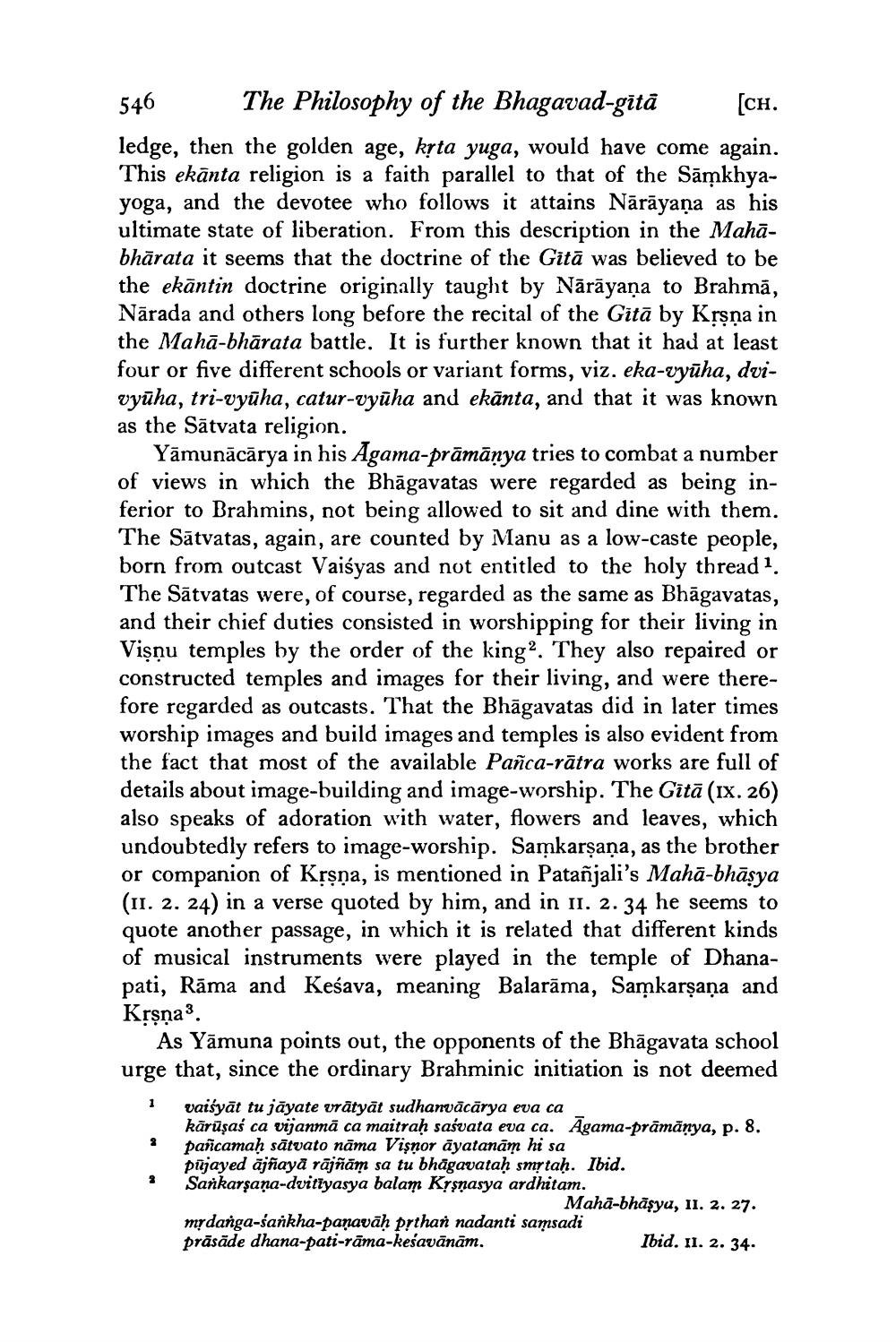________________
546 The Philosophy of the Bhagavad-gitā [CH. ledge, then the golden age, krta yuga, would have come again. This ekānta religion is a faith parallel to that of the Sāmkhyayoga, and the devotee who follows it attains Nārāyana as his ultimate state of liberation. From this description in the Mahābhārata it seems that the doctrine of the Gitā was believed to be the ekāntin doctrine originally taught by Nārāyaṇa to Brahma, Nārada and others long before the recital of the Gitā by Krsna in the Mahā-bhārata battle. It is further known that it had at least four or five different schools or variant forms, viz. eka-vyūha, dvivyūha, tri-vyūha, catur-vyūha and ekānta, and that it was known as the Sätvata religion.
Yāmunācārya in his Agama-prāmānya tries to combat a number of views in which the Bhāgavatas were regarded as being inferior to Brahmins, not being allowed to sit and dine with them. The Sātvatas, again, are counted by Manu as a low-caste people, born from outcast Vaisyas and not entitled to the holy thread 1. The Sātvatas were, of course, regarded as the same as Bhāgavatas, and their chief duties consisted in worshipping for their living in Vişnu temples by the order of the king?. They also repaired or constructed temples and images for their living, and were therefore regarded as outcasts. That the Bhāgavatas did in later times worship images and build images and temples is also evident from the fact that most of the available Pañca-rātra works are full of details about image-building and image-worship. The Gītā (IX. 26) also speaks of adoration with water, flowers and leaves, which undoubtedly refers to image-worship. Samkarşaņa, as the brother or companion of Krsna, is mentioned in Patañjali's Mahā-bhāsya (11. 2. 24) in a verse quoted by him, and in II. 2. 34 he seems to quote another passage, in which it is related that different kinds of musical instruments were played in the temple of Dhanapati, Rāma and Keśava, meaning Balarāma, Samkarşaņa and Krsna.
As Yāmuna points out, the opponents of the Bhāgavata school urge that, since the ordinary Brahminic initiation is not deemed i vaiśyāt tu jāyate vrätyāt sudhanvācārya eva ca
kārüşaś ca vijanmā ca maitraḥ sasvata eva ca. Agama-prāmänya, p. 8. pancamaḥ sātvato nāma Vişnor āyatanam hi sa pujayed ajñayā rājñām sa tu bhāgavataḥ smytah. Ibid. Sankarşana-dvitiyasya balam Kysnasya ardhitam.
Maha-bhāşya, 11. 2. 27. mrdanga-sankha-panavāḥ prthan nadanti samsadi prāsäde dhana-pati-rāma-keśavānām.
Ibid. 11. 2. 34.




